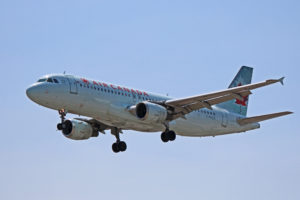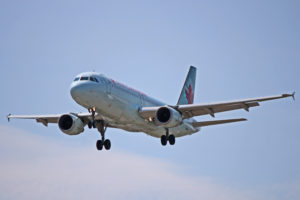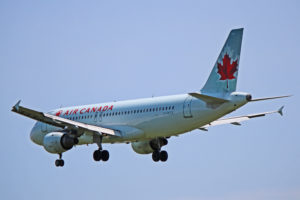 One of the most infamous incidents in North American aviation since Sully dropped his A320 into the Hudson River. C-FKCK is the Air Canada Airbus A320-200 that nearly landed on top of a lined up taxiway at San Francisco International Airport in 2017. We photographed the A320 on August 11, 2018 while plane spotting at Toronto Pearson International Airport (YYZ).
One of the most infamous incidents in North American aviation since Sully dropped his A320 into the Hudson River. C-FKCK is the Air Canada Airbus A320-200 that nearly landed on top of a lined up taxiway at San Francisco International Airport in 2017. We photographed the A320 on August 11, 2018 while plane spotting at Toronto Pearson International Airport (YYZ).
For full-size, high resolution versions for any of the photos in the image gallery, simply click on the individual pictures. See below for more detailed information on C-FKCK, the Airbus A320-200 model in general and the airline.
Image Gallery
C-FKCK
Airbus A320-200
Air Canada
Resources
C-FKCK Air Canada Airbus A320-200 Image Gallery
Want to use one of these photos for your website, blog or news site? They’re free to use – take a look at our Photo Usage Policy.
C-FKCK
Long before it was making international headlines for the San Francisco incident, C-FKCK performed its first flight on October 29, 1991. The Airbus A320-211 was delivered to Air Canada on January 17, 1992. The A320 is configured for a maximum total of 146 passengers with 14 seats in business class, 36 more in premium economy and 96 economy class seats. This is one of 42 A320 airliners currently in the main Air Canada fleet.
On January 20, 2014, C-FKCK was flying from Toronto, Ontario to Winnipeg, Manitoba. Cruising at 36,000 feet, near Thunder Bay, Ontario, the A320 took an uncommanded 40 degree bank to the left. The aircraft was stabilized and reached Winnipeg safely. The sudden bank was attributed to wake turbulence from a nearby Air Canada Boeing 777-300ER (C-FIUL).
On July 7, 2017, C-FKCK was flying from Toronto to San Francisco. The crew was given clearance to land but lined up the plane with the taxiway instead of the runway. Crew questioned that there were lights on the runway but were told the runway was clear. The runway was clear but they were not heading toward it. In the nick of time, the imminent danger was realized and the A320 was told to abort and go around. The airliner landed safely 15 minutes later.
Just a few months later, the airplane had mechanical problems on a flight from Toronto to Los Angeles, California on September 7, 2017. Enroute, the left side engine experienced a compressor stall. Crew were able to recover the engine and continue to LAX for a safe landing. As a result, the IP check valve on the left side engine was replaced.
Airbus A320-200
The initial variant in the Airbus A320 Family, the Airbus A320-200 was introduced with launch customer Air France in 1988. Since, nearly 4,400 have been delivered. The airliner is 38 metres or 123 feet in length with a wingspan of 36 metres or 118 feet. At the tail, the airplane is 12 metres or 39 feet in height. The flight range is 6,100 kilometres.
Air Canada
Air Canada was founded as Trans Canada Air Lines in 1937. The name was officially switched on January 1, 1965. There are nearly 190 aircraft in the main fleet with over 400 when subsidiaries are included. The largest in the fleet is the Boeing 777-300ER. The airline flies to close to 210 destinations around the world (350 with subsidiaries included).
Headquartered at the Air Canada Centre on the grounds of Montreal Pierre Elliott Trudeau International Airport (YUL) in Dorval, Quebec, the airline is a founding member of the Star Alliance. Other founding members include Lufthansa, Scandinavian Airlines, Thai Airways and United Airlines. There are now 27 full member airlines worldwide.
Resources
San Francisco International Airport
Los Angeles International Airport




